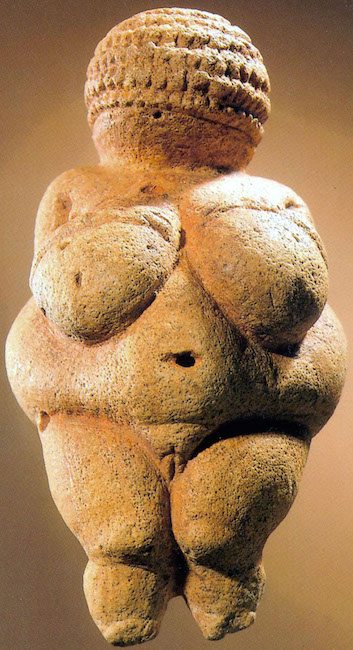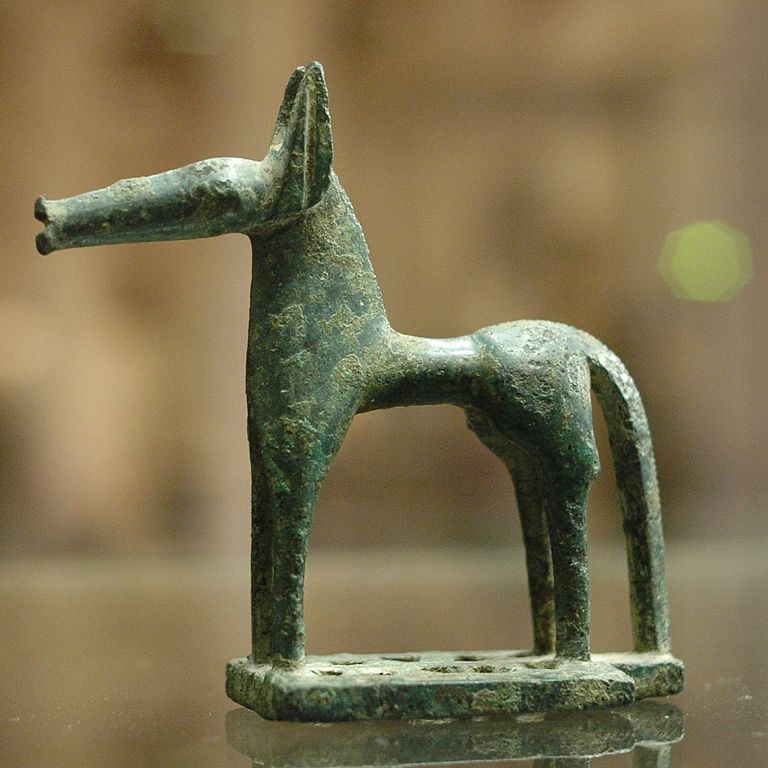Prehistoric, Ancient Classical and Medieval Art
Episode #1 of the course “Art Movements Throughout European History”
Art has been a part of human life since prehistoric times. With an appreciation and desire for beauty as part of their daily lives, prehistoric people created small, portable objects such as jewelry and religious artifacts that fit their nomadic lifestyles. One early example, the Venus of Willendorf, shows how prehistoric peoples created art to represent their hopes, dreams, and aesthetic values. Primitive cave painters in France used their hands and simple brushes, with paints created from charcoal and plants, to document their lives. As people settled into societies, artists became integrated into culture.
 Venus of Willendorf
Venus of Willendorf
 Wall Paintings @ Lascaux, France ca. 15,000-13,000 BCE
Wall Paintings @ Lascaux, France ca. 15,000-13,000 BCE
 8th-century BC votive horse from Olympia (Louvre)
8th-century BC votive horse from Olympia (Louvre)
The largest societies of the ancient world became the blueprint for centuries of artists. Classic art is associated with the ancient Greeks and Romans. A culture that valued education highly, ancient Greeks incorporated mathematics into artwork and architecture, and religious and historical themes were common. They also invented materials and methods that made artwork last longer.
The Roman Empire revitalized principles of Greek art, focusing on proportion, depictions of the heavens, and their imperial legacy. Roman artists incorporated local styles from the cultures that were assimilated into the empire. Until it fell, the Roman Empire included the most diverse group of artists in history.
 Laocoön and His Sons (Late Hellenistic), Vatican Museum
Laocoön and His Sons (Late Hellenistic), Vatican Museum
 Augustus of Prima Porta, statue of the emperor Augustus, 1st century CE. Vatican Museums
Augustus of Prima Porta, statue of the emperor Augustus, 1st century CE. Vatican Museums
The Middle Ages describes the time between the fall of the Roman Empire and the rise of the Renaissance. Medieval art was often commissioned for church buildings or wealthy religious people, and it focuses on holy subjects such as saints. Medieval artists considered the subject more important than technique.
They rarely depicted landscapes or scenes without humans, and they painted flat perspectives without concern for capturing realistic elements. In approximately 1000 CE, European artistic style incorporated elements of ancient Roman art such as bold colors and less rigid human figures.
 Reconstruction of the temple of Jerusalem, William of Tyre (Medieval art)
Reconstruction of the temple of Jerusalem, William of Tyre (Medieval art)
This Romanesque style later developed into Gothic art in the 13th century, which designed architecture to be more angular and ethereal and began to portray a more realistic, bolder depiction of human and religious subjects.
 Milan Cathedral (Gothic architecture)
Milan Cathedral (Gothic architecture)
Learn Something New Every Day
Get smarter with 10-day courses delivered in easy-to-digest emails every morning. Join over 400,000 lifelong learners today!
Share with friends

